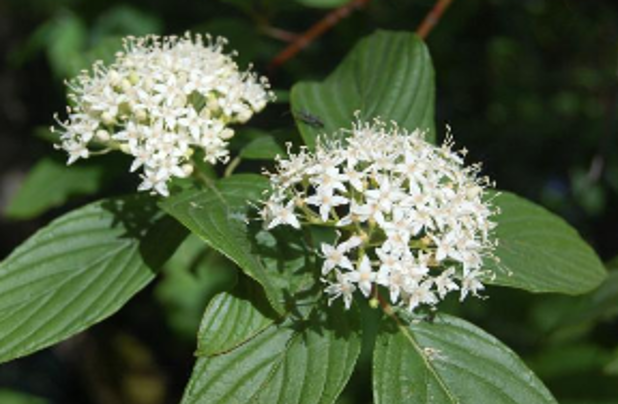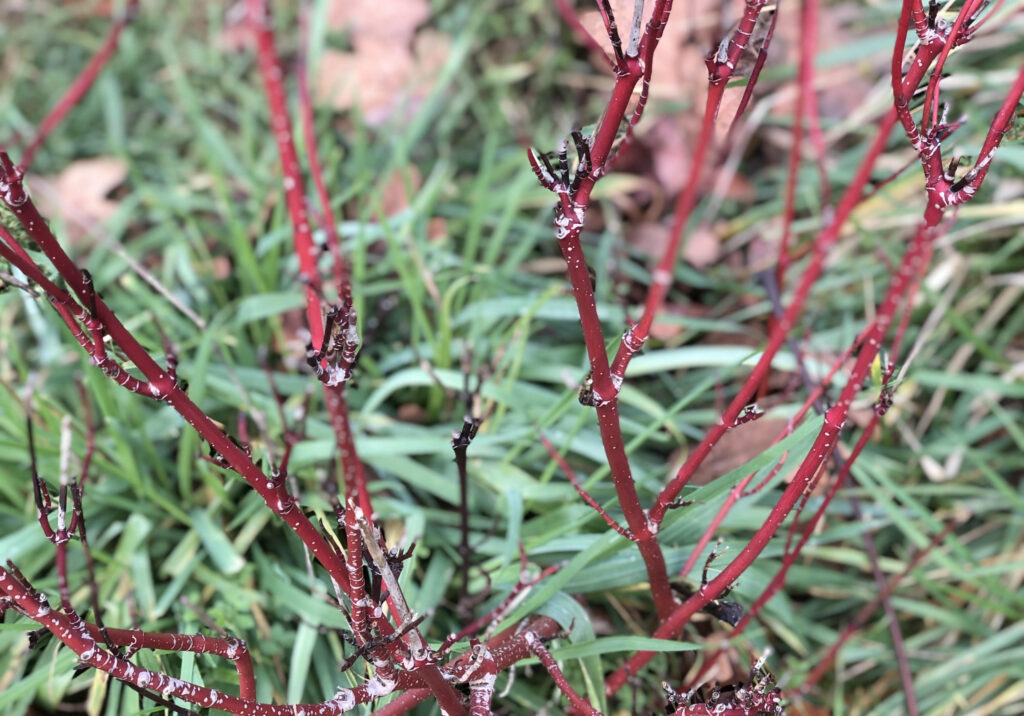Red-Osier Dogwood (Cornus stolonifera).

The red-osier dogwood (also known as Cornus sericea) is a familiar native shrub. These deciduous plants range in size from 1-6m tall to 3-5m wide and are easily deciphered by their distinct bark. New growth typically retains a bright reddish/purplish hue and after time, older bark takes on a green/greyish appearance. Leaves are bright green during spring and summer months and turn red in the fall before they drop. Their leaves are pointed and tapered ovals, growing between 4-15cm long and 3-9cm wide. The red-osier dogwood flowers, then produces edible white or whitish-blue berries, which are usually 7-9mm across. Flowers have 4-petals and are arranged in clusters called cymes.

Traditional uses of red-osier dogwood by Indigenous people were numerous. These shrubs have long provided food, health and material services. The berries were eaten with other native berries, but were also used solitarily as a mouthwash. The inner bark was often applied to combat swelling and used to assist with pain reduction. The plant was also utilized to aid with digestive issues and fever. Material uses were various, with bark and branches typically utilized for fish traps and poles, baskets, sweathouses and red dye. The bark was also often smoked in pipes.

Red-osier dogwood is a species that thrives in moist to semi-moist environments. It’s found throughout B.C. and northern areas such as Alaska, the Yukon and the Northwest Territories. Outside of this range, it can be found in select areas on the East Coast of Canada, as well as several coastal and inland areas in the United States (such as California and Ohio). Habitat selection is diverse in temperate and boreal regions, but often includes stream and lakesides, wetlands, damp prairies and forests. The red-osier dogwood provides important cover and perch area for birds. In clearings, the red-osier dogood may hinder regeneration and natural growth of some conifer types.
For more information, visit E-Flora BC, BC Conservation Data Centre, Splitrock Environmental and Canadian Wildlife Federation.


